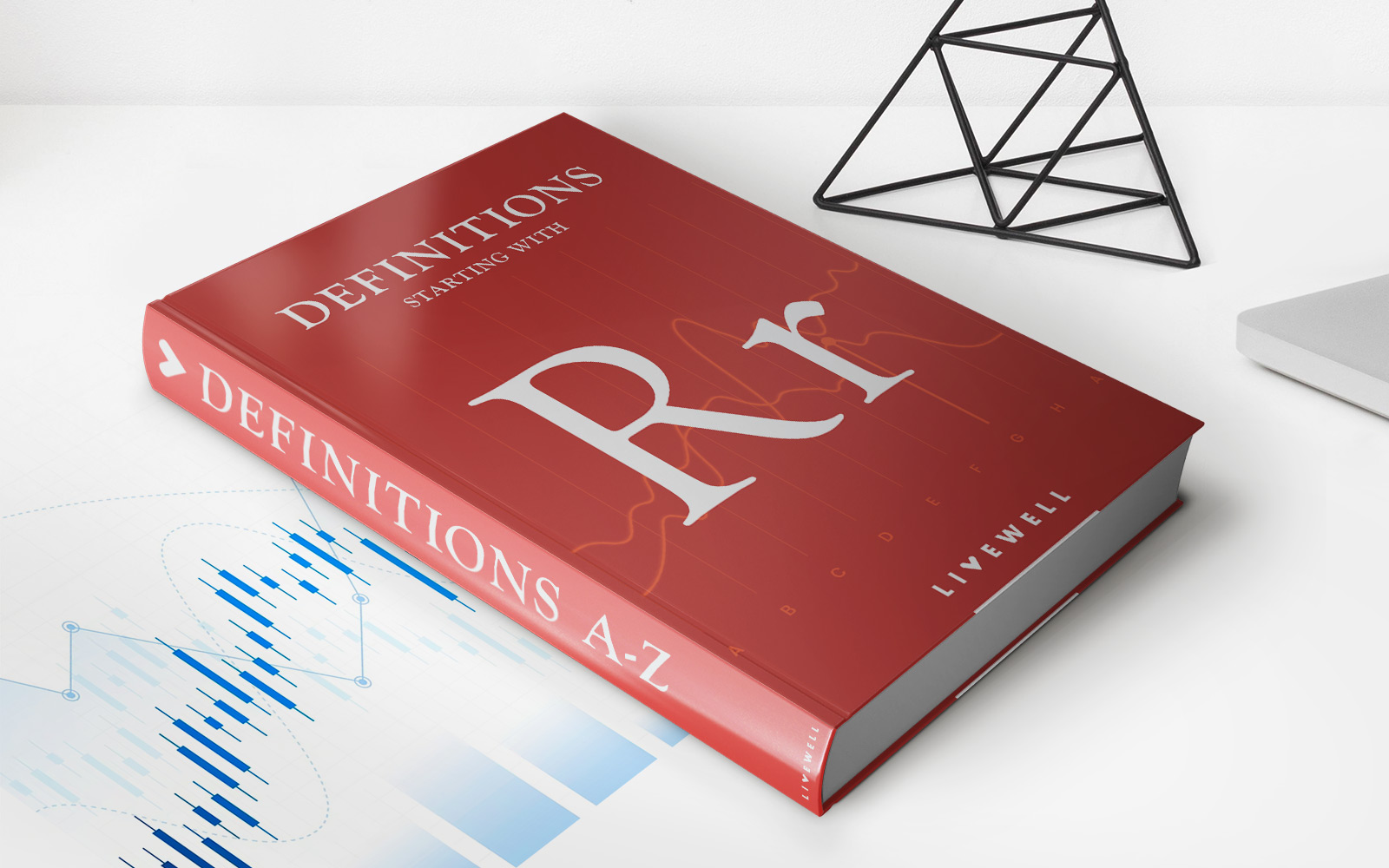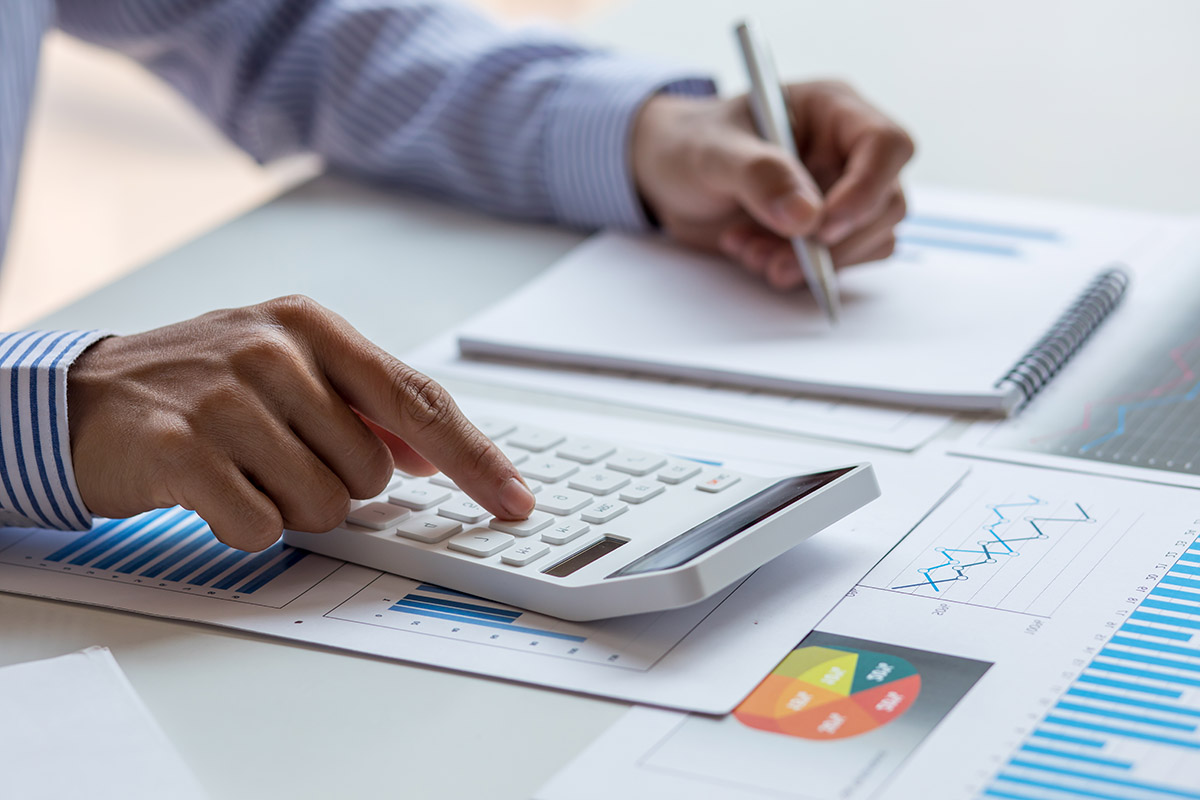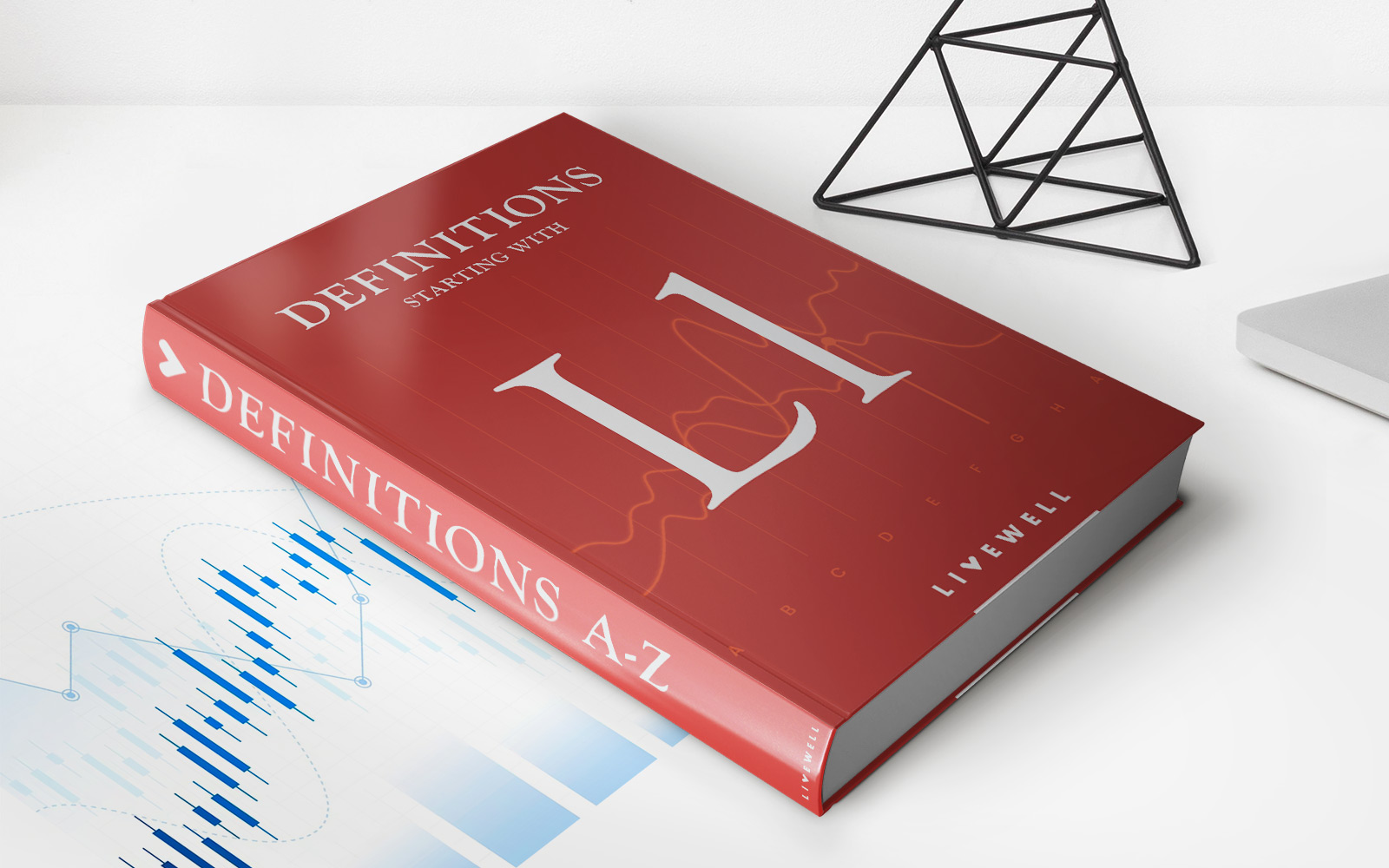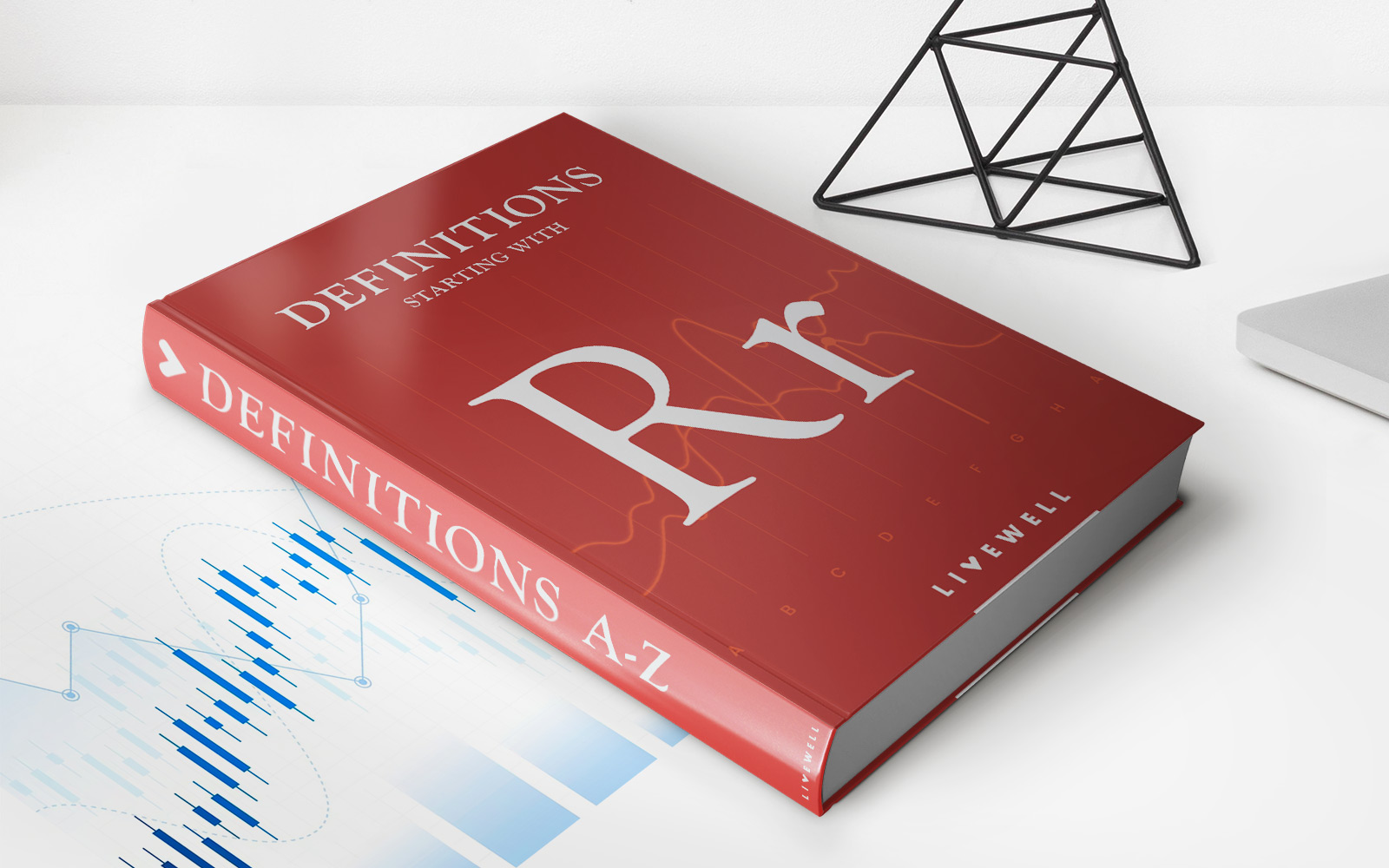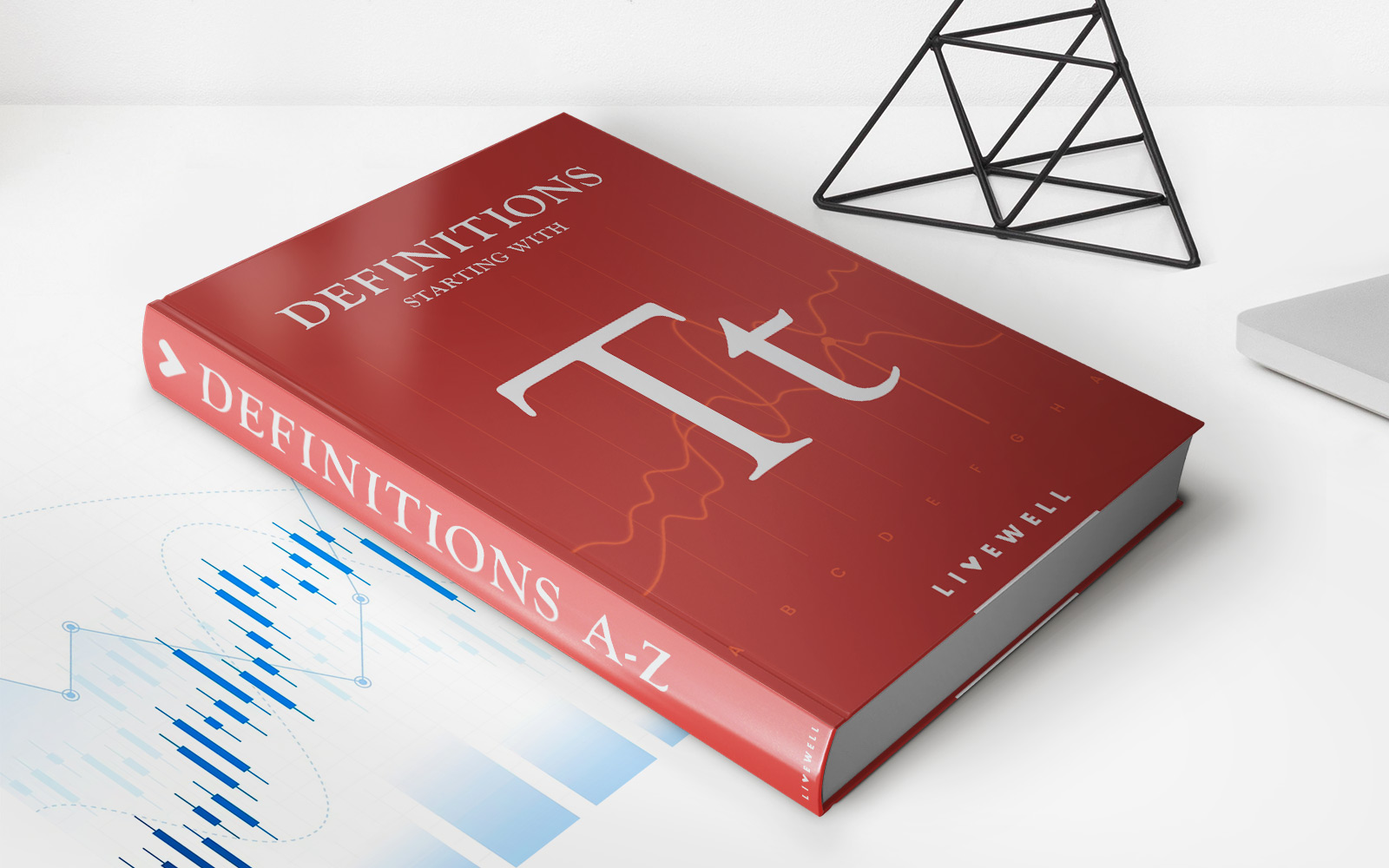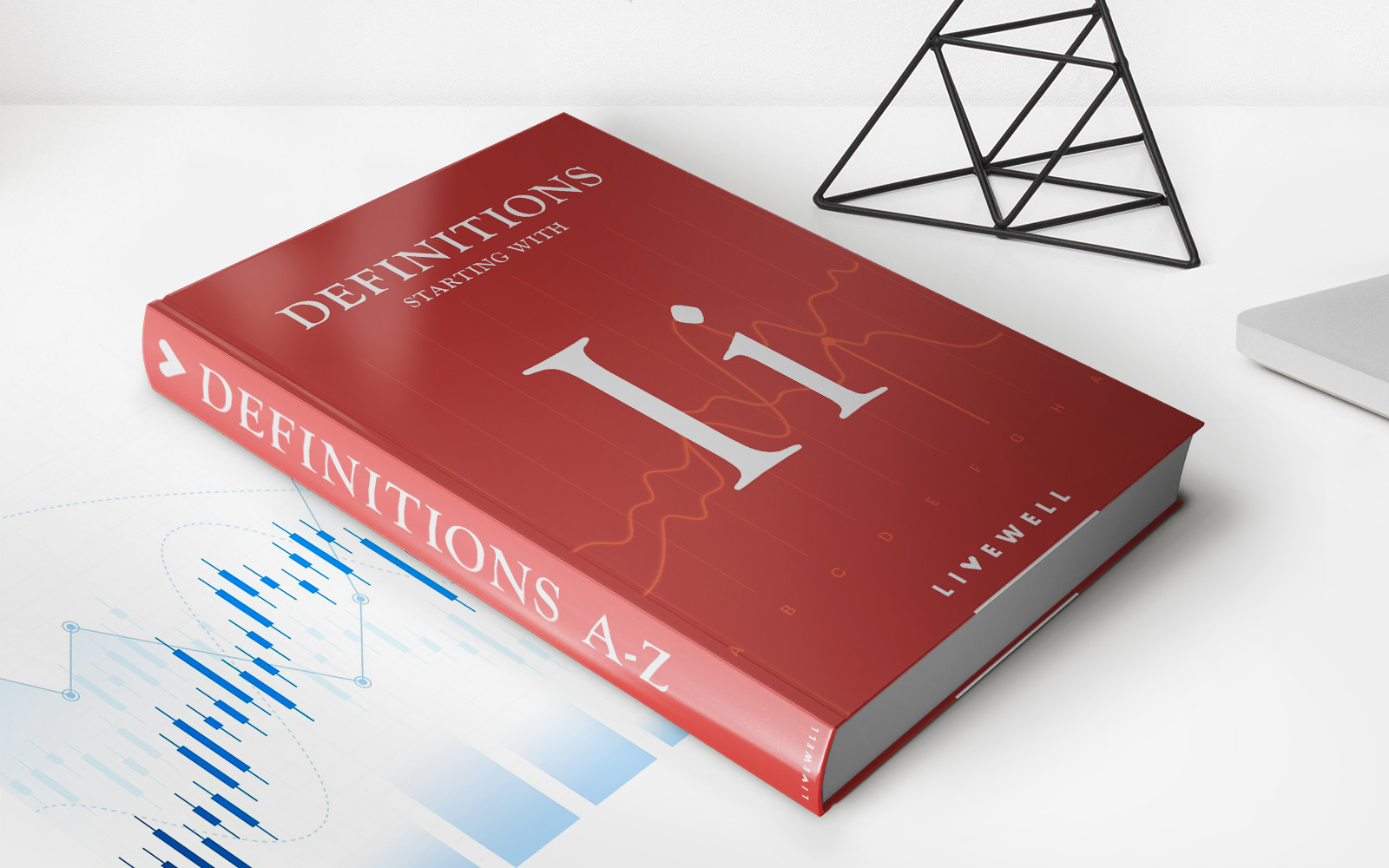

Finance
How To Find The Equilibrium Level Of Real GDP
Published: October 28, 2023
Discover how to find the equilibrium level of real GDP in the field of finance. Gain insights and strategies to optimize economic stability and growth.
(Many of the links in this article redirect to a specific reviewed product. Your purchase of these products through affiliate links helps to generate commission for LiveWell, at no extra cost. Learn more)
Table of Contents
Introduction
In the field of economics, the concept of equilibrium is vital for understanding the overall health and stability of an economy. Equilibrium refers to a state of balance and harmony, where different forces or factors are in a state of offsetting each other. When it comes to the economy, the equilibrium level of real GDP (Gross Domestic Product) plays a crucial role in ensuring optimal economic performance and growth.
The equilibrium level of real GDP represents the point at which the aggregate demand for goods and services matches the aggregate supply. In other words, it is the level of output at which the economy is operating at full employment and resources are efficiently utilized. When the economy is operating at its equilibrium level of real GDP, there is no upward or downward pressure on prices, and there are no shortages or surpluses in the market.
Understanding how to find the equilibrium level of real GDP is essential for both policymakers and individuals seeking to make informed decisions about their financial well-being. By analyzing the factors that affect the equilibrium level of real GDP and the mechanisms through which it is determined, we can gain insight into the overall health of the economy and make informed predictions about its future trajectory.
In this article, we will delve into the concept of equilibrium level of real GDP, explore the factors that influence it, and examine the aggregate demand and aggregate supply model as a tool for understanding and determining this crucial economic indicator. Additionally, we will discuss the role of macroeconomic policies in achieving and maintaining equilibrium, and the potential consequences of shifts in aggregate demand and supply.
By gaining a thorough understanding of the equilibrium level of real GDP, we can better navigate the complex and ever-changing world of finance and economics, and make more informed decisions for our personal and business finances.
Understanding Equilibrium Level of Real GDP
The equilibrium level of real GDP is a fundamental concept in macroeconomics that represents the level of output an economy can sustain over the long run without causing inflation or deflation. It is the point where aggregate demand and aggregate supply intersect, indicating a balance between the demand for goods and services and the ability of the economy to produce them.
To understand the equilibrium level of real GDP, it is important to distinguish between nominal GDP and real GDP. Nominal GDP measures the total value of goods and services produced in an economy at current market prices. Real GDP, on the other hand, adjusts for changes in the overall price level and represents the output of an economy in constant prices, allowing for a more accurate measure of economic growth.
The equilibrium level of real GDP is determined by the overall level of spending in the economy, known as aggregate demand, and the ability of firms to produce output, known as aggregate supply. When aggregate demand exceeds aggregate supply, there is upward pressure on prices and the economy is operating below its potential. Conversely, when aggregate supply exceeds aggregate demand, there is downward pressure on prices and the economy is operating above its potential.
In order to achieve equilibrium, where there is a balance between aggregate demand and aggregate supply, adjustments are made through changes in price levels. If aggregate demand exceeds aggregate supply, prices will rise, thereby decreasing the quantity demanded and increasing the quantity supplied. On the other hand, if aggregate supply exceeds aggregate demand, prices will fall, leading to an increase in demand and a decrease in supply.
The equilibrium level of real GDP is also influenced by other factors such as technological advancements, changes in labor force participation, and shifts in the overall productivity of the economy. These factors can affect the economy’s potential to produce goods and services and can shift the aggregate supply curve, thereby impacting the equilibrium level of real GDP.
Understanding the equilibrium level of real GDP is crucial for policymakers and economists as it helps determine the overall health and stability of the economy. By monitoring fluctuations in aggregate demand and supply and making necessary adjustments to ensure equilibrium, policymakers can help maintain stable price levels, promote economic growth, and mitigate the risks of inflation or recession.
In the next section, we will explore the different factors that influence the equilibrium level of real GDP and their implications for economic stability and growth.
Factors Affecting Equilibrium Level of Real GDP
The equilibrium level of real GDP is influenced by a variety of factors that impact both aggregate demand and aggregate supply in an economy. Understanding these factors is crucial for policymakers and economists to accurately assess the health of the economy and make informed decisions to achieve and maintain equilibrium.
1. Consumer Spending: Consumer spending is a significant driver of aggregate demand. When consumers have high disposable income, they are more likely to spend on goods and services, increasing aggregate demand and potentially raising the equilibrium level of real GDP. Factors such as consumer confidence, interest rates, and income levels play a crucial role in determining consumer spending patterns.
2. Investment: Business investment in new capital equipment, technology, and infrastructure also has a direct impact on aggregate demand and the equilibrium level of real GDP. Higher levels of investment can stimulate economic growth and increase the productive capacity of the economy, leading to higher levels of output and potentially higher equilibrium GDP.
3. Government Spending: Government spending plays a significant role in influencing aggregate demand. Increased government spending, especially in sectors such as infrastructure development or healthcare, can boost aggregate demand and increase the equilibrium level of real GDP. On the other hand, decreased government spending can have the opposite effect, leading to lower equilibrium GDP.
4. International Trade: Export and import levels affect the aggregate demand and supply of an economy. Higher levels of exports increase aggregate demand, leading to a potential increase in the equilibrium level of real GDP. Similarly, increased imports can decrease domestic production and potentially reduce the equilibrium GDP.
5. Technological Advancements: Technological advancements can have a substantial impact on the overall productivity of an economy. Improved technology and innovations can increase the efficiency of production, leading to higher levels of output and potentially raising the equilibrium level of real GDP.
6. Labor Force Participation: Changes in labor force participation, such as an increase in the number of workers or changes in employment rates, can affect the productive capacity of an economy. A larger labor force can lead to higher levels of production and potentially raise the equilibrium level of real GDP. Conversely, a decline in labor force participation can have the opposite effect.
7. Natural Disasters or Shocks: Unforeseen events like natural disasters, financial crises, or sudden changes in global market conditions can disrupt the equilibrium level of real GDP. These shocks can lead to a decrease in aggregate supply or demand, potentially lowering the equilibrium GDP temporarily.
By analyzing these factors and their impact on aggregate demand and supply, policymakers and economists can develop strategies to stabilize the economy, promote sustainable growth, and maintain equilibrium. In the next section, we will explore the aggregate demand and aggregate supply model, which provides a framework for understanding how these factors interact to determine the equilibrium level of real GDP.
The Aggregate Demand and Aggregate Supply Model
The aggregate demand and aggregate supply model is a powerful tool used in macroeconomics to analyze the relationship between the overall level of prices and the quantity of goods and services produced in an economy. It provides insights into the determination of the equilibrium level of real GDP by examining the interaction between aggregate demand and aggregate supply.
Aggregate demand (AD) represents the total demand for goods and services in an economy at various price levels. It is composed of four main components: consumer spending, investment, government spending, and net exports (exports minus imports). As the overall price level in an economy changes, aggregate demand will respond accordingly.
Aggregate supply (AS) represents the total quantity of goods and services that firms are willing and able to produce at different price levels. It is influenced by various factors such as labor costs, availability of resources, technological advancements, and government regulations. Aggregate supply can be divided into short-run aggregate supply (SRAS) and long-run aggregate supply (LRAS).
In the short run, firms may not have enough time to adjust their production levels fully. As a result, the SRAS curve is relatively steep. Changes in factors such as wages, input prices, or technology can impact short-run aggregate supply, leading to shifts in the curve. For example, a rise in input prices might decrease aggregate supply, while an improvement in technology might increase it.
In the long run, firms have more time to adjust their production levels. The LRAS curve is typically represented as a vertical line, indicating that the level of output is determined by factors like the available technology and the size of the labor force. Changes in aggregate demand will affect the overall price level but will not impact the long-run equilibrium level of real GDP.
The intersection of the aggregate demand curve and the short-run aggregate supply curve represents the equilibrium level of real GDP in the short run. When aggregate demand exceeds short-run aggregate supply, there is upward pressure on prices, and firms respond by increasing production. Conversely, when short-run aggregate supply exceeds aggregate demand, there is downward pressure on prices, leading to a decrease in production.
Over time, the economy will adjust, and wages and other input prices will change to accommodate the new level of output. This adjustment process moves the economy towards the long-run equilibrium, where the aggregate demand curve intersects with the long-run aggregate supply curve. The long-run equilibrium represents the level of real GDP that an economy can sustain without causing inflation or deflation.
The aggregate demand and aggregate supply model allows policymakers and economists to assess the impact of various factors on the equilibrium level of real GDP. By analyzing changes in aggregate demand or supply and their effects on price levels and output, policymakers can make informed decisions to stabilize the economy, promote growth, and achieve long-term equilibrium.
In the next section, we will explore how the equilibrium level of real GDP is determined within the aggregate demand and aggregate supply model.
Determining the Equilibrium Level of Real GDP
The equilibrium level of real GDP is determined by the intersection of the aggregate demand (AD) and aggregate supply (AS) curves within the aggregate demand and aggregate supply model. This intersection point represents the level of output and price level at which the economy is in a state of balance.
When the level of real GDP in an economy is below the equilibrium level, there is excess aggregate demand, meaning that demand exceeds the available supply of goods and services. This situation puts upward pressure on prices as consumers compete for limited resources, leading to inflationary pressures. In response, firms increase production to meet the demand and restore equilibrium.
On the other hand, when the level of real GDP exceeds the equilibrium level, there is a surplus of goods and services, causing downward pressure on prices. Firms reduce their production levels to reduce excess inventory, and consumers adjust their demand accordingly. This brings the economy back to the equilibrium level of real GDP.
The equilibrium level of real GDP is determined not only by the aggregate demand curve but also by the position of the aggregate supply curve. Factors such as changes in input prices, technology, and productivity can shift the aggregate supply curve, influencing the equilibrium level of real GDP.
If there is an increase in aggregate demand without a corresponding increase in aggregate supply, the economy may experience demand-pull inflation, whereby prices rise due to excess demand. Conversely, if there is a decrease in aggregate demand without a corresponding decrease in aggregate supply, the economy may experience demand-deficient or cyclical unemployment, as firms reduce production to match reduced demand.
In the long run, the equilibrium level of real GDP is determined by the long-run aggregate supply curve (LRAS) within the aggregate demand and aggregate supply model. The LRAS curve represents the level of output an economy can sustain without causing inflation or deflation. Changes in aggregate demand will only affect the overall price level in the long run but will not impact the long-run equilibrium level of real GDP.
It is important to note that the equilibrium level of real GDP is not fixed and can change over time. Factors such as changes in consumer spending patterns, investments, government policies, technological advancements, or international trade can shift the aggregate demand or aggregate supply curves, leading to changes in the equilibrium level of real GDP.
Understanding how the equilibrium level of real GDP is determined is crucial for policymakers and economists. By analyzing the factors that influence aggregate demand and aggregate supply, policymakers can make informed decisions to stabilize the economy, promote growth, and ensure that the economy operates at its full potential.
In the next section, we will explore the concept of shifts in aggregate demand and aggregate supply and their implications for the equilibrium level of real GDP.
Shifts in Aggregate Demand and Supply
In the aggregate demand and aggregate supply model, shifts in the aggregate demand (AD) and aggregate supply (AS) curves can impact the equilibrium level of real GDP. These shifts can occur as a result of various factors, including changes in consumer behavior, government policies, external shocks, or shifts in technology.
Shifts in Aggregate Demand:
1. Changes in Consumer Confidence: If consumers become more optimistic about the future state of the economy, they may increase their spending, leading to an upward shift in the aggregate demand curve. Conversely, if consumers become more pessimistic, they are likely to decrease their spending, leading to a downward shift in aggregate demand.
2. Fiscal Policy: Government policies, such as changes in tax rates or government spending, can also shift the aggregate demand curve. Expansionary fiscal policies, such as tax cuts or increased government spending, can stimulate demand and shift the AD curve to the right. Conversely, contractionary fiscal policies, such as tax hikes or decreased government spending, can lead to a shift in aggregate demand to the left.
3. Monetary Policy: Changes in monetary policy implemented by central banks can also impact aggregate demand. For example, a decrease in interest rates can encourage borrowing and increase consumer and business spending, leading to a rightward shift in aggregate demand. Conversely, an increase in interest rates can discourage borrowing and spending, leading to a leftward shift in aggregate demand.
4. Exchange Rates: Changes in exchange rates can affect aggregate demand, especially for countries heavily dependent on exports or imports. If a country’s currency depreciates, its exports become more competitive, leading to increased demand for its goods and a rightward shift in aggregate demand. On the other hand, a country’s currency appreciation can decrease export demand and shift aggregate demand to the left.
Shifts in Aggregate Supply:
1. Changes in Input Prices: When input prices, such as wages or raw material costs, increase, it leads to a decrease in aggregate supply and a leftward shift in the aggregate supply curve. Conversely, if input prices decrease, it can lead to an increase in aggregate supply and a rightward shift in the aggregate supply curve.
2. Technological Advancements: Technological advancements can increase the productivity and efficiency of firms, leading to a rightward shift in aggregate supply. This shift allows firms to produce more output with the same level of inputs, resulting in an increase in the equilibrium level of real GDP.
3. Changes in Government Regulations: Government regulations, such as labor market regulations or environmental standards, can impact the cost of production for firms. If regulations increase costs, it can lead to a leftward shift in aggregate supply. Conversely, if regulations are relaxed or reduced, it can lead to a rightward shift in aggregate supply.
4. Supply Shocks: External shocks such as natural disasters, geopolitical events, or changes in global commodity prices can have a significant impact on aggregate supply. For example, a disruption in the supply of oil can lead to a decrease in aggregate supply and a leftward shift in the aggregate supply curve.
Shifts in aggregate demand and supply have direct implications for the equilibrium level of real GDP. When there is a shift in either curve, the economy moves away from its initial equilibrium level. Policymakers and economists closely monitor these shifts to make informed decisions and implement appropriate measures to stabilize the economy and bring it back to its equilibrium level of real GDP.
In the next section, we will explore how macroeconomic policies can be used to achieve and maintain equilibrium in the economy.
Achieving Equilibrium through Macroeconomic Policies
Macroeconomic policies play a crucial role in achieving and maintaining equilibrium in the economy. These policies are implemented by governments and central banks to influence aggregate demand and supply, stabilize price levels, and promote sustainable economic growth. By carefully managing the economy, policymakers can strive to keep the equilibrium level of real GDP in line with the long-run potential of the economy.
Expansionary Policies:
1. Monetary Policy: Central banks can implement expansionary monetary policies to stimulate aggregate demand and increase the equilibrium level of real GDP. Measures such as lowering interest rates and increasing the money supply encourage borrowing, investment, and consumer spending, which leads to an increase in aggregate demand.
2. Fiscal Policy: Expansionary fiscal policies, such as increasing government spending or reducing taxes, can also boost aggregate demand and stimulate economic growth. Increased government spending on infrastructure projects or social welfare programs directly increases aggregate demand, while tax cuts increase disposable income and encourage consumer spending.
Contractionary Policies:
1. Monetary Policy: When there is excessive aggregate demand leading to inflationary pressures, central banks can implement contractionary monetary policies. By raising interest rates and reducing the money supply, central banks aim to decrease borrowing, investment, and consumer spending, which helps to cool down the economy and bring aggregate demand in line with aggregate supply.
2. Fiscal Policy: Contractionary fiscal policies, such as reducing government spending or increasing taxes, are used to decrease aggregate demand and control inflation. A decrease in government spending reduces the overall level of demand in the economy, while tax increases reduce disposable income and discourage consumer spending.
Supply-Side Policies:
Supply-side policies focus on increasing the productive capacity of the economy and reducing barriers to growth. These policies aim to shift the aggregate supply curve to the right, allowing the economy to produce more output and increase the equilibrium level of real GDP. Examples of supply-side policies include investment in education and training, research and development, infrastructure development, deregulation, and tax incentives for businesses.
Automatic Stabilizers:
Automatic stabilizers are built-in mechanisms that help stabilize the economy without the need for direct policy action. These include programs such as unemployment benefits, progressive income taxes, and welfare programs. During periods of economic downturns, automatic stabilizers provide a safety net and increase aggregate demand. Conversely, during periods of economic expansion, these mechanisms reduce aggregate demand, helping to moderate the economy and prevent overheating.
It is important for policymakers to carefully consider the timing and magnitude of macroeconomic policies to achieve the desired outcomes. Effective policy implementation requires a deep understanding of the current state of the economy, the specific challenges it faces, and the potential impacts of policy measures. Additionally, policymakers must be mindful of the potential side effects or unintended consequences of policy actions.
By utilizing a combination of expansionary, contractionary, and supply-side policies, policymakers can actively manage the economy, fine-tuning the level of aggregate demand and supply to achieve and maintain equilibrium in the economy. This helps to promote stable price levels, minimize unemployment, and foster sustained and balanced economic growth.
In the final section, we will summarize the key points discussed and emphasize the importance of understanding the equilibrium level of real GDP in navigating the world of finance and economics.
Conclusion
The equilibrium level of real GDP is a critical concept in economics as it represents the point where aggregate demand and aggregate supply intersect, indicating a state of balance and stability in the economy. Understanding how to find and analyze the equilibrium level of real GDP is essential for making informed decisions as individuals, businesses, and policymakers.
In this article, we explored the factors that influence the equilibrium level of real GDP, such as consumer spending, investment, government policies, international trade, technological advancements, labor force participation, and external shocks. We discussed how changes in these factors can shift the aggregate demand and aggregate supply curves, impacting the equilibrium level of real GDP and causing inflationary or recessionary pressures.
We also examined the aggregate demand and aggregate supply model as a framework for understanding the relationship between price levels and the quantity of goods and services produced. The model illustrated how shifts in aggregate demand and supply can affect the equilibrium level of real GDP, and how policymakers can use macroeconomic policies to achieve and maintain equilibrium while promoting overall economic stability and growth.
Expansionary policies, including monetary and fiscal measures, can be deployed to stimulate aggregate demand during periods of economic downturns, while contractionary policies can be implemented to control inflationary pressures during periods of excessive aggregate demand. Additionally, supply-side policies can enhance the productive capacity of the economy and shift the aggregate supply curve to the right, supporting long-term economic growth.
By effectively managing aggregate demand and supply, policymakers aim to achieve and maintain a sustainable equilibrium level of real GDP. This equilibrium level ensures optimal utilization of resources, stable price levels, and balanced economic growth.
It is crucial for individuals and businesses to have a solid understanding of the equilibrium level of real GDP to make informed financial decisions. Recognizing the impact of factors such as changes in consumer behavior, government policies, and global events can help individuals and businesses navigate economic fluctuations and plan for the future.
Overall, grasping the concept of the equilibrium level of real GDP provides valuable insights into the functioning of the economy and enables us to better comprehend the various mechanisms at play in the world of finance and economics. By staying informed and proactive, we can navigate the complexities of the economic landscape and make decisions that align with our personal and business financial goals.

